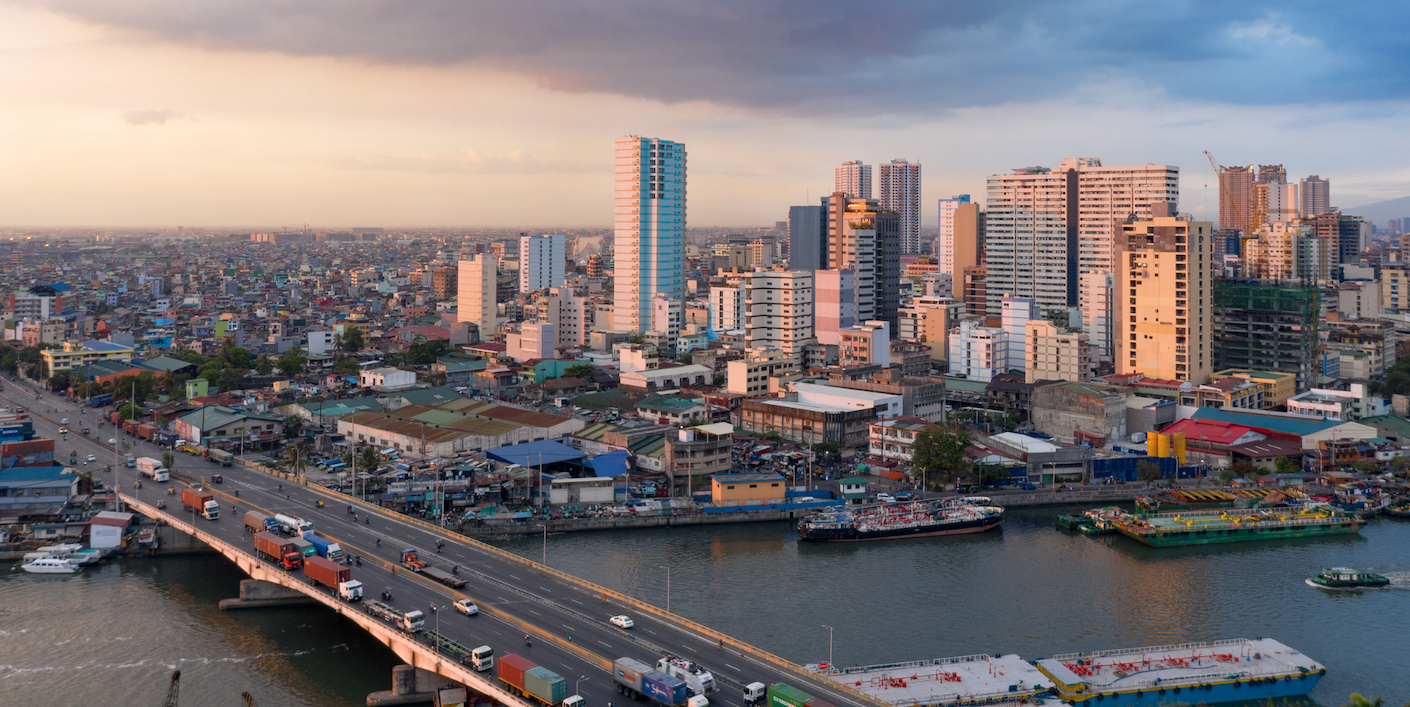This week, we’re rounding up our exploration of ASEAN markets! We’ve already investigated the opportunity for food and beverage businesses considering Vietnam and Thailand, and today we’re moving onto The Philippines. Last year, Australia and the Philippines celebrated 75 years of diplomatic relations, with hopefully many more to come as we look to strengthen trade ties into the future!
1. A Dynamic Economy
The Philippines’ economy has proven to be a resilient and dynamic one, both in analysing the past and looking to the future. Pre-COVID-19, the country was already embarking upon a strong growth trajectory, with economic growth averaging 6.4% annually since 2010. The emergence of the pandemic no doubt dampened this growth trend, yet the country is quickly getting back on track, seeing the fastest GDP growth among the ASEAN countries in 2022 at 6.9%, with strong forecasts for 2023 at 6.1%. But it’s not all good news. Inflation has risen steadily in 2022 to 6.3% in August to reach an almost four-year high. And while this rate is set to decline in 2023, it has seen prices for many foods and alcoholic beverages climb.
2. Consumers Taking Charge Of Their Health
As we’ve seen in countless other markets, COVID-19 has seen consumers take charge of their health. They want more control over their wellbeing, and this means more control over the foods and beverages they consume. As such, over 60% of consumers in the Philippines say they now regularly check product labels for ingredients and nutritional information when buying food and drinks. But, consumers continue to demand more from brands. While they want access to healthier products, they also want more action on the supply side, demanding that brands reformulate their products, better communicate their benefits, and provide clearer nutritional labels. In particular, consumers look to reduce their intake of salt, sugar and fats, while also seeking to improve their fruit and vegetable intake.
3. Close Economic Relations With Australia
Australia and the Philippines maintain a close economic bond, supported by strong people-to-people links. Both countries are members of APEC, while our trading relationship is also supported by the ASEAN-Australian-New Zealand Free Trade Agreement (AANZFTA). They’re also party to the Regional Comprehensive Economic Partnership (RCEP), the world’s largest trade bloc which seeks to promote transparency and trading rule harmonisation as well as tariff barriers across the region. And while the countries don’t share a bilateral free trade agreement, these agreements have already been effective in boosting trade, with AANZFTA alone having doubled two-way trade since its inception in 2010. Food manufacturers are already benefiting, with top food exports among Australian brands including cereals, meat, dairy, spirits and edible fruits.
4. A Growing Food Retail Sector
Valued at over US$100 billion in 2020, the Philippines’ food and beverage retail sector offers a wealth of opportunities for exporters. Now, in 2022, the sector is expected to expand by 6% this year, according to the USDA. This growth has been supported by loosening COVID-19 restrictions, as well as economic growth following the recent elections. COVID-19 has however created somewhat of a reset in the industry, as consumers seek out more plant-based, sustainable and DIY food and beverage products. So, what can Australia offer in the market? Well, limited local production means imported meat and dairy products are in demand, especially beef, lamb, and milk powder, yoghurt and cheese. Australia is already a top supplier of wine, yet opportunities for beer and spirits are on the rise. Appetite is also growing for unique processed foods and beverages as retailers seek to differentiate themselves.
5. A Young Population Offering Exciting Opportunities
The Philippines maintains one of the youngest populations in the Asia region, with a median age of just over 24! This creates a plethora of exciting trends. Millennials are passionate about imported and premium products, with social media driving this generation to try and consume food from all over the world. They demand intense flavours, extreme textures and vivid global cuisines. They’re also interested in the story behind their food, including what’s in and, and how it’s made. This drives demands for transparency from brands across the supply chain. Millennials are said to lead the way when it comes to food trends in the Philippines, and this is seeing convenient, healthy, high-protein, low-calorie, quality and clean labelled foods grow.
6. Potential For Supplying More Premium, Imported Foods
The Philippines is well on-track to achieve upper-middle income status by the end of 2022. For food and beverage businesses, this creates enormous potential in the premium space. Consumer demand for imported, high quality foods continues to remain strong, even amid cost pressures such as rising inflation and COVID-19’s supply chain pressures. Accompanying this demand for quality products is greater interest in more gourmet, natural and organic foods, as health and quality demands often fall hand-in-hand as health-conscious consumers equate the two. The demand for imported foods is being supported on the supply side, with supermarket chains seeking to improve their variety of imported goods to offer their customers higher end products not available at other retailers.
7. Corporate Social Responsibility Efforts Resonate With Consumers
Exporters to the Philippines are encouraged to pay attention to their corporate social responsibility (CSR) efforts. Consumers are no longer simply evaluating a food or beverage based on taste or price alone–they’re also looking at the production process, and how ethical and sustainable it is. We can see this when we look at their daily habits, with almost 80% of Filipino consumers attempting to have a positive environmental impact through their daily activities, like seeking out eco-friendly brands and products made from all-natural ingredients. Consumers are also fairly actively involved in social and political issues, indicating the importance of fair trade production practices.
8. Convenience Driving Purchasing Habits
As urbanisation increases, our lives are only set to become busier. As such, the demand for convenient food and beverage options has never been greater. In the Philippines, this has manifested in the form of increased food deliveries, as well as reheating and preparing ready meals on a weekly basis. Consumers are also much more willing to spend money if it saves them time. This demand for convenience isn’t simply affecting what consumers buy, but also where they buy it. The convenience economy has seen significant growth in the past few years, with consumers visiting their local store to buy ready-to-eat foods. So too have online channels, with delivery and e-commerce platforms such as Foodpanda and Shopee jumping places to be among the Philippines’ top 30 brands this year.
Wrap-Up
With that, let’s recap the top sources of opportunity in the Philippines’ market. Strong economic growth forecasts are providing an avenue for more premium, imported foods in the market. Consumers are also taking charge of their health, seeking out low salt, sugar and fat products. Consumer health and sustainability concerns fall hand-in-hand, as consumers seek out all-natural products and eco-friendly, authentic brands. Trade ties with Australia are also supported by the ASEAN-Australian-New Zealand Free Trade Agreement, which has more than doubled bilateral trade since 2010, thus supporting our exporters with reduced tariffs and restrictions. Australian agricultural products are already taking advantage, with meat, dairy and cereal exports already high while opportunities in processed foods are on the rise.
We hope you’ve found these insights on the Indonesian market helpful. As always, if you’ve got any questions or want to discuss export opportunities for your company, feel free to drop us a line at Export Connect – we’d love to hear from you.



